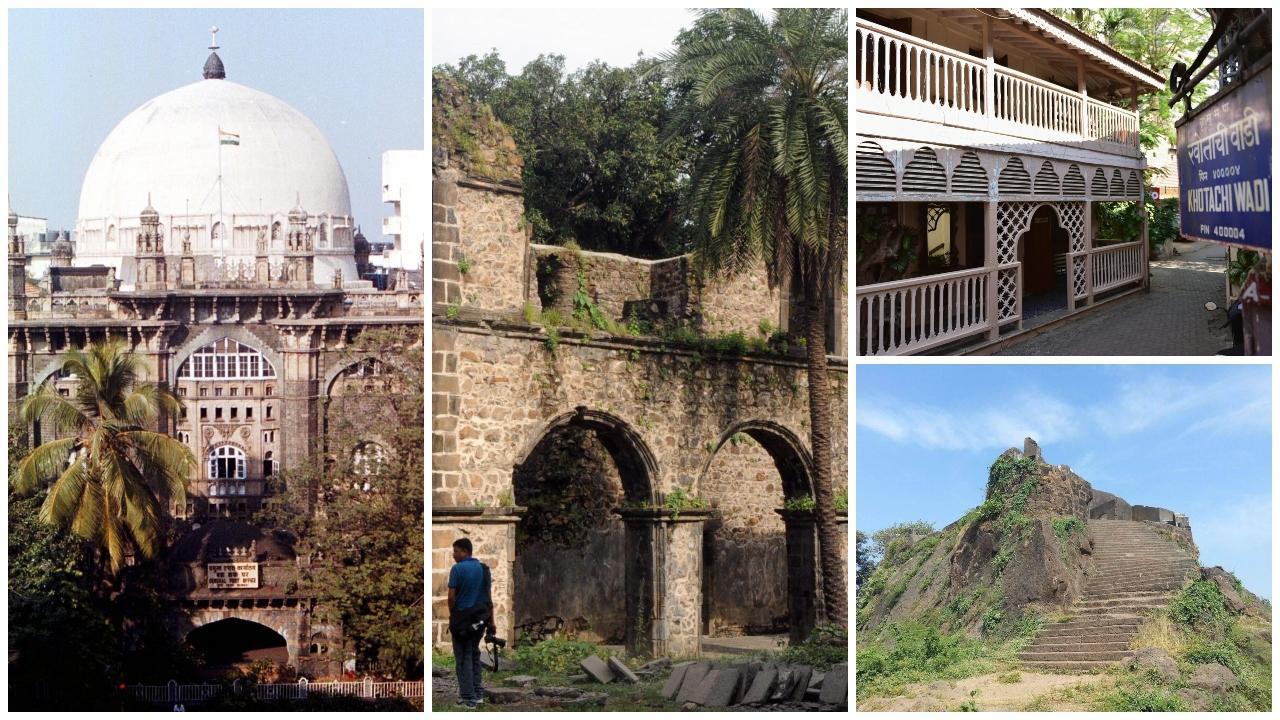On World Heritage Day 2022, here’s all you need to know about some lesser-known heritage sites in Mumbai. Pics/Midday photo team
Updated On: 2022-04-18 12:59 PM IST

_d.jpg)
Hasanabad Dargah
Popularly known as the Taj Mahal of Mumbai, Hasanabad Dargah was built in 1884 by Aga Khan 2 and is situated on Anjeerwadi Road in Mazagaon. Hasanabad used to be the resting place of Aga Khan I, the 46th Imam of the Nizari Muslims. The construction of the Dargah began after Aga Khan I's funeral in 1881, and was completed in 1884. This historical gem which is hidden in the bustling lanes of Mumbai has three domes along with two 90-feet minarets.
How to reach: You can reach the Dargah either by Byculla Station on the Central Railway Line or Dockyard Road Station on the Harbour Railway Line.
How to reach: You can reach the Dargah either by Byculla Station on the Central Railway Line or Dockyard Road Station on the Harbour Railway Line.
General Post Office
Arguably the largest post office in the country, GPO was designed by British architect John Begg in 1902. The iconic post office also houses a war memorial plaque commemorating the Post Office of India employees in the service of the British Indian Army who died in the First World War. Built in the Indo-Saracenic style (Persian-Hindu-Gothic), here you can also see the influence of Gol Gumbaz of Bijapur, Karnataka, on which it is modelled.
How to reach: Chhatrapati Shivaji Maharaj Terminus is nearest station to the Post Office.
Sion Fort
This hillock fort located close to the Sion railway station, was built under the regime of the East India Company between 1669 and 1677. The fort marked the boundary between Parel island, which was held by the British, and Salsette Island, held by the Portuguese. The Fort, which stands on a 10-acre plot in Central Mumbai, is a government-protected monument, maintained by the Archaeological Society of India.
How to reach: The fort is 5 minutes away from the Sion station.
Bassein Fort
Bassein Fort, also known as the Vasai Fort, was built by the Portuguese in 1536. The fort, spread over 110 acres, was a city in itself with six churches, three convents, one Cathedral, St. Sebastian Fort, senate house, town hall, factory, hospital and other public and private buildings. The Portuguese used it as their base for 300 years, and it was also the official residence of the Portuguese governor whenever he came to visit Bombay.
How to reach: You can reach there by taking a train to Virar Railway Station from Churchgate. From there, hire an auto-rickshaw or taxi to reach the fort.
Khotachiwadi
Khotachiwadi is a heritage locality adorned by a series of Portuguese-style houses located across the narrow lanes of Girgaum. Away from the city’s buzz, Khotachiwadi is a beautiful escape! In 1850s, Dadoba Waman Khot, who owned land in Girguam, sold plots of land to local East Indian families. He helped develop a settlement for immigrants, migrants and local fishermen. The term Khotachiwadi, translates to ‘the garden of Khot’.
How to reach: The Charni Road station is the nearest to Khotachiwadi Road.